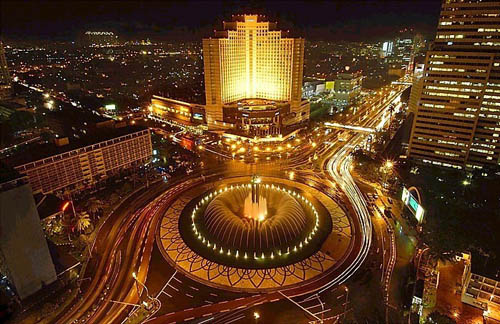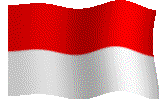Jakarta

Jakarta, the capital of Indonesia, is the largest city in Indonesia. The city has all the modern amenities. But in its quest for modernization the city has not forgotten its past and has carefully preserved its rich cultural heritage. Apart from the skyscrapers, colonial structures built by European powers form an integral part of Jakarta's skyline.
Jakarta is a city of many fascinating facets. It is the main gateway to Indonesia. In recent years, Jakarta has expanded its facilities for visitors with multi-star luxury hotels, fine restaurants, exciting nightlife and modern shopping centres.
History of Jakarta:
Jakarta was a small harbour town when the last Hindu Kingdom of Java, Kingdom of Pajajaran, was ruling in 14th century. Muslim ruler Fatahilklah conquered the city and changed the name to Jayakarta or the City of Victory on June 22, 1527. Later on, the Dutch conquered the city in 1619 and built a new city Batavia, which remained the centre of power for them in South East Asia for more than 300 years. The city came under the siege of Japanese Imperial Forces in 1941 during the Second World War and its name was changed back to Jakarta (from Jayakarta). The defeat of Japan did not allow them to remain in Indonesia for long. Dutch again tried to capture the city but by now freedom struggle was already quite strong in the country and on August 17, 1945, the Indonesian leaders proclaimed its independence from foreign rule in Jakarta.
Weather of Jakarta:
Jakarta has tropical climate with a high average humidity. There is not much difference in the day and night temperature. Average day temperature is 28ºC while average night temperature is a bit cooler at 25ºC. October to April is the wet season while the dry season is from May to September.
Places to See in Jakarta:
The National Monument, or "Monas" as it is popularly called, is one of the monuments built during the Sukarno era of fierce nationalism. It stands for the people's determination to achieve freedom and the crowning of their efforts in the Proclamation of Independence in August 1945. The 137-metre tall marble obelisk is topped with a flame coated with 35 kg of gold. The base houses a historical museum and a hall for meditations. The monument is open to the public and upon request the lift can carry visitors to the top, which offers a bird's eye view of the city and the sea.
The National Museum of Indonesia is situated at Jalan Medan Merdeka Barat. It contains around 85,000 items, the largest in the world of Indonesian artefacts. There is one of the largest and rare collections of Oriental ceramics in this museum.
Istiqlal Mosque: It is the largest mosque in Southeast Asia and the second largest in the world. The mosque took 17 long years to build and the grandeur of its walls and dome is visible from quite far away.
Orchid Gardens: Indonesia has some of the most exotic orchid gardens. Several commercial orchid gardens are open to public. Some of the best known of them are located at Slipi and Taman Mini.
Condet: This village in southern Jakarta is a protected area where the old rural life style of Jakarta is preserved. Condet is also famous for its fruit orchards. Taman Mini Indonesia Indah (Beautiful Indonesia in Miniature): Situated just outside Jakarta, the park has miniatures of all the 27 provinces of the country reproduced in its Central Lake. This is a wonderful place to know about the entire archipelago in just one day. Regular cultural programmes and ceremonies are held in the park representing different regions.
Pulau Seribu: This group of islands in the Jakarta Bay offers a haven away from the bustle of city life. There are golden beaches fringed with coconut palms. The surrounding waters are a paradise for scuba divers.


